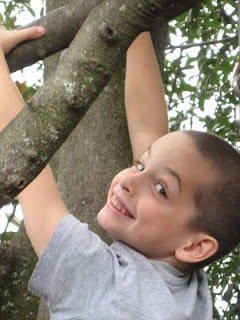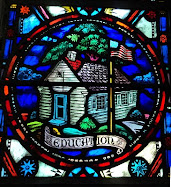Dear friends,
Are you trying to choose or modify your approach to home schooling? Here are a few things to think about...
WHERE ARE YOU COMING FROM?
Let’s talk about you for a few minutes. The preconceptions that you bring to the planning stage have been formed by your own childhood, the research you have done about education, and your experiences teaching your own children so far.
Recall your childhood educational experiences. Recollections of our own school years profoundly influence how we think about the whole process of education. If you have negative memories of a particular method or situation, you may be tempted to avoid anything that reminds you of it. I encourage you to consciously acknowledge these thoughts, and make an informed decision about whether or not this will affect what your children do. For example, when I was in fifth grade, I didn’t perform up to my potential using self-paced Independent Learning Units (ILUs). Though I was intelligent enough, I was too lazy to motivate myself. I could have used that failure as a basis to avoid unit studies in our own home school. However, I realized that one major problem with the ILUs was a lack of careful oversight by the teachers, which was something I could overcome while teaching my own children.
Ask yourself these questions about your childhood:
• How were you educated in the preschool years?
• How were you taught to read?
• Were you a bookworm, a reluctant reader, or somewhere in between?
• Did you “get” math?
• What did you like?
• What frustrated you?
• Did you slip through the cracks?
• How were your relationships with the teachers and other students?
• What were your own strengths and weaknesses?
• What resources were available in your home?
• Did your parents help you with school work?
• What hobbies did you pursue?
• What role did Scriptural principles play in your education?
Look back over your research into home schooling. One of the main ways we can learn what works is by gaining insight from others who have been doing it for a while. However, there are so many different opinions about how to educate, that we have to use major discernment to pick and choose from among them. I will be describing some of these approaches later in the chapter, but for now, ask yourself these questions:
• What motivated you to think about home schooling?
• What visions did you have at the start for how you wanted things to be?
• Who were your early mentors and examples?
• What books and magazines have you read? Have these covered a good variety of approaches, or just one or two?
• Is there any one major approach which attracts you the most?
• What Scriptural principles do you want to see worked into your home school?
Evaluate your home schooling experience so far. This can actually be one of the most accurate gauges of what is going to work (or not work) for your family. However, even if something hasn’t worked yet, you don’t have to automatically give it up; it may just need some tweaking or some time. The other temptation is to cling to something that worked before, even after its most effective season has passed. Children change, and sometimes we need to go with the flow and move on! Do give your decisions a healthy dose of clear thinking first, by asking such questions as:
• Do you really want to home school or are you just doing it because someone else (in your family, church, circle of friends) is putting you under pressure to do it?
• Are you afraid, intimidated, or overwhelmed?
• Do you have one child, a few children, or a houseful? How has this affected your approach and your routine?
• What methods have you actually tried, and how well did they work?
• What would your children say about what you have done and how you have done it?
• What observations have others (spouse, relatives, friends, etc.) made? Are they valid?
• If you had one question to ask a home school guru, what would it be?
• Are you in a network of supportive home school friends?
• What role do Scriptural principles actually play in your home school?
Get to know your own children. This is a continual process, since they change over the months and years. Periodically sit down with each of your children to discuss their education. It gives children a sense of dignity and worth when they see that we care about how they feel. When we know our children, this enables us to customize their education to focus on their strengths while stretching them in their weaknesses. Each child is created very uniquely and learns in a different way.
• What is your child’s learning mode? No child can be lumped into a single category, but for simplification purposes, a visual child learns best by what he sees, an auditory child by what he hears, and a tactile/kinesthetic child by what he touches or moves.
• Does your child learn best with Mom, with brothers or sisters, with a group of other children, or off by himself?
• Is your child self-motivated and excited about his education, or does he require a bit of prodding to get going?
• Does your child prefer creative and spontaneous explorations, or does he want his information to be organized and sequential?
• What does he like? What bothers him? What does he not understand?
• What new thing does he want to try?
• What else does he want to tell you about himself and how he learns?
This is a short excerpt from the chapter on "Choosing Your Approach to Education" from my book
Common Sense Excellence: Faith-Filled Home Education for Preschool to 5th Grade.




























